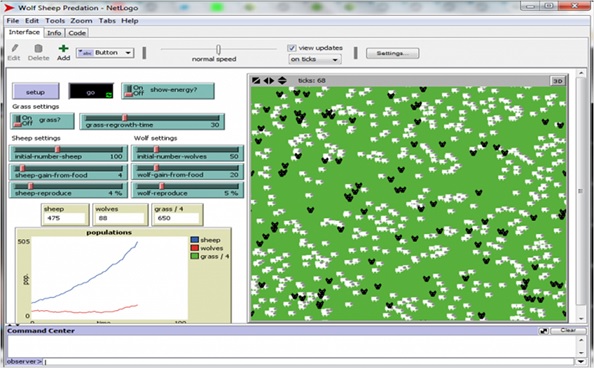NetLogo programming language
Introduction to NetLogo programming language:
Netlogo was designed by Uri Wilensky. NetLogo is an agent-based programming language and integrated modelling environment. It was design to be low threshold and no ceiling. The programming concept uses agent in form of turtle, link patches and the observer. It allows exploration by modifying sliders, switches, input, choosers and other interface elements. Modification of existing models and authoring of new models are also allowed in NetLogo programming language.
Feature of NetLogo programming language:
- System:
• Free, open source, Cross-platform: runs on Windows, Mac and Linux.
- Programming:
• Fully programmable and approachable syntax
• Agents are supported by Logo dialect. - Environment:
• Agent of NetLogo monitors for controlling and inspecting agents.
• BehaviorSpace, an open source tool used to collect data from multiple parallel runs of a model.
• NetLogo 3D for modelling 3D worlds. - Display and visualization:
• View your model in either 2D or 3D
• Scalable and rotatable vector shapes
• Turtle and patch labels - Web:
• Models and HubNet clients are saved as applets to be embedded in web pages .
- APIs:
• Controlling API allows to embed NetLogo in a script or in an application.
• Extensions API allows to add new commands and reporters to the NetLogo language.
NetLogo programming language and NetLogo Assignment Help Through Guided Sessions
Netlogo Programming code:
{`
A function that define the absolute value of a number:
to-report absolute-value [number]
ifelse number >= 0
[
report number
]
[
report 0 • number
]
end
Example of procedures setup and go:
to setup
ca ;; clear the world
crt 10 ;; make 10 new turtles
end
to go
ask turtles
[ fd 1 ;; all turtles move forward one step
rt random 10 ;; .. and turn their hear a random amount
lt random 10 ]
end
`}



